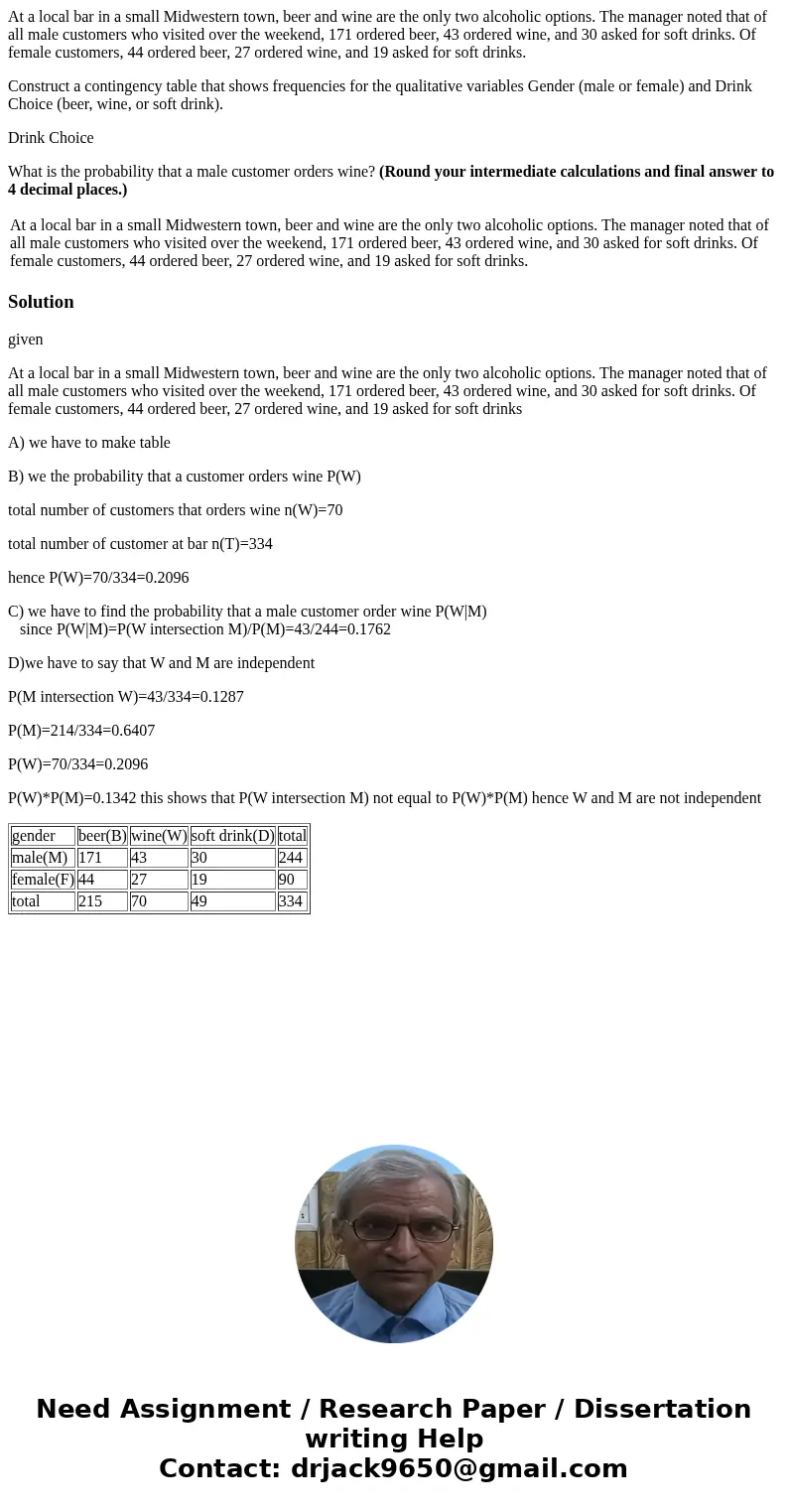At a local bar in a small Midwestern town beer and wine are
At a local bar in a small Midwestern town, beer and wine are the only two alcoholic options. The manager noted that of all male customers who visited over the weekend, 171 ordered beer, 43 ordered wine, and 30 asked for soft drinks. Of female customers, 44 ordered beer, 27 ordered wine, and 19 asked for soft drinks.
Construct a contingency table that shows frequencies for the qualitative variables Gender (male or female) and Drink Choice (beer, wine, or soft drink).
Drink Choice
What is the probability that a male customer orders wine? (Round your intermediate calculations and final answer to 4 decimal places.)
| At a local bar in a small Midwestern town, beer and wine are the only two alcoholic options. The manager noted that of all male customers who visited over the weekend, 171 ordered beer, 43 ordered wine, and 30 asked for soft drinks. Of female customers, 44 ordered beer, 27 ordered wine, and 19 asked for soft drinks. |
Solution
given
At a local bar in a small Midwestern town, beer and wine are the only two alcoholic options. The manager noted that of all male customers who visited over the weekend, 171 ordered beer, 43 ordered wine, and 30 asked for soft drinks. Of female customers, 44 ordered beer, 27 ordered wine, and 19 asked for soft drinks
A) we have to make table
B) we the probability that a customer orders wine P(W)
total number of customers that orders wine n(W)=70
total number of customer at bar n(T)=334
hence P(W)=70/334=0.2096
C) we have to find the probability that a male customer order wine P(W|M)
since P(W|M)=P(W intersection M)/P(M)=43/244=0.1762
D)we have to say that W and M are independent
P(M intersection W)=43/334=0.1287
P(M)=214/334=0.6407
P(W)=70/334=0.2096
P(W)*P(M)=0.1342 this shows that P(W intersection M) not equal to P(W)*P(M) hence W and M are not independent
| gender | beer(B) | wine(W) | soft drink(D) | total |
| male(M) | 171 | 43 | 30 | 244 |
| female(F) | 44 | 27 | 19 | 90 |
| total | 215 | 70 | 49 | 334 |

 Homework Sourse
Homework Sourse